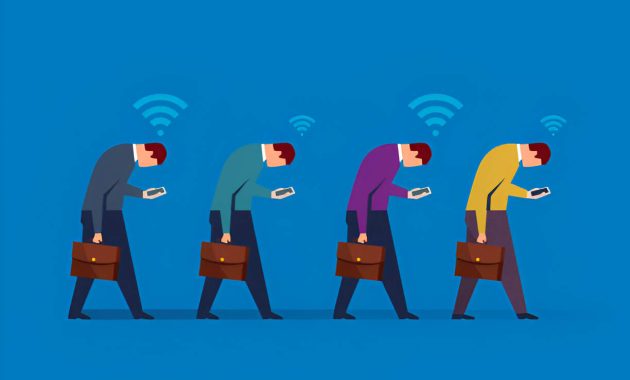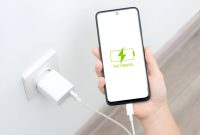In the digital age, our lives have become increasingly intertwined with technology, raising concerns about a growing phenomenon: digital addiction. This modern-day challenge affects people of all ages, blurring the lines between necessary use and dependency on smartphones, social media, and other digital platforms. As we grapple with the implications of our hyper-connected world, it’s crucial to understand the signs, science, and impact of digital addiction and strategies for maintaining a healthy relationship with technology. This exploration delves into the complexities of digital dependency and offers insights into creating a balanced approach to our digital lives.
The Rise of Digital Dependency in Our Daily Lives
The digital revolution has transformed our daily routines, leading to unprecedented technology reliance. Our smartphones have become extensions of ourselves, serving as alarm clocks, personal assistants, and primary communication devices. This increasing dependency is reflected in the alarming rise of screen time across all age groups.
Internet usage has skyrocketed, with many individuals spending several hours daily browsing, streaming, or engaging on social media platforms. This shift in digital habits has reshaped how we work, socialize, and even relax. While technology offers numerous benefits, it’s crucial to recognize the potential drawbacks of excessive digital consumption.
Smartphone addiction is a growing concern, with many people experiencing anxiety when separated from their devices. This phenomenon has led to the coining of terms like “nomophobia” – the fear of being without a mobile phone. As our reliance on technology deepens, it’s essential to cultivate a balanced approach to digital usage, ensuring that our online activities enhance rather than detract from our overall well-being.
Identifying the Signs and Symptoms of Digital Addiction
Digital addiction is a growing concern in our increasingly connected world. Recognizing the signs and symptoms of this modern-day issue is crucial for maintaining a healthy relationship with technology. Some common indicators of digital addiction include:
- Compulsive internet use: Feeling an uncontrollable urge to constantly check devices or stay online.
- Loss of time awareness: Spending more time online than intended, often losing track of hours.
- Neglecting responsibilities: Prioritizing digital activities over work, school, or personal obligations.
- Social isolation: Withdrawing from real-life social interactions in favor of online communication.
- Mood changes: Experiencing irritability, anxiety, or depression when unable to access digital devices.
- Sleep disturbances: Difficulty sleeping due to late-night device use or anxiety about missing online activity.
- Physical symptoms: Experiencing headaches, eye strain, or posture problems from excessive screen time.
- Failed attempts to cut back: Inability to reduce digital consumption despite recognizing its negative impact.
Social media addiction and gaming disorder are specific forms of digital addiction that may manifest through excessive use of platforms or games, neglecting other aspects of life. If you or someone you know exhibits multiple symptoms, it may be time to seek professional help or implement strategies to regain control over digital habits.
The Science Behind Digital Addiction: How Technology Affects Our Brains
The science behind digital addiction reveals a complex interplay between our brains and technology. At the core of this phenomenon is dopamine, a neurotransmitter associated with pleasure and reward. Each notification, like, or message triggers a small dopamine release, reinforcing our desire to engage with digital devices.
Neuroplasticity, the brain’s ability to form new neural connections, plays a crucial role in digital addiction. Constant digital stimulation can reshape our neural pathways, making us more susceptible to seeking frequent technological interactions. This rewiring can impact our attention span, making it challenging to focus on tasks that don’t provide immediate gratification.
The brain’s reward system, evolutionarily designed to encourage survival behaviors, is hijacked by the instant gratification offered by technology. This can lead to a cycle of compulsive checking and scrolling, as our brains crave the next hit of digital stimulation.
Understanding these neurological processes is crucial in developing strategies to maintain a healthy relationship with technology. By recognizing how our brains respond to digital stimuli, we can make informed decisions about our tech usage and implement practices to mitigate the potential negative effects on our cognitive functions and overall well-being.
The Impact of Digital Addiction on Mental Health and Relationships
Digital addiction has become a growing concern in our increasingly connected world, with significant implications for mental health and relationships. Excessive use of digital devices and online platforms can disrupt our tech-life balance, leading to various psychological and social issues.
One of the primary concerns is the impact on mental health. Studies have shown a correlation between excessive screen time and increased rates of anxiety and depression. The constant need to check notifications and stay connected can lead to heightened stress levels and decreased overall well-being.
Moreover, digital addiction can contribute to social isolation. While online relationships may seem fulfilling, they often lack the depth and intimacy of face-to-face interactions. This can result in a sense of loneliness and disconnection from real-world social networks.
To promote digital wellbeing, it’s crucial to establish healthy boundaries with technology. This may include setting designated screen-free times, engaging in offline activities, and prioritizing in-person interactions. By consciously managing our digital consumption, we can mitigate the negative effects of technology on our mental health and nurture more meaningful relationships in both online and offline spaces.
Strategies for Breaking the Cycle of Digital Addiction
Breaking the cycle of digital addiction requires a multi-faceted approach that combines awareness, strategy, and commitment. One effective method is implementing a digital detox, which involves temporarily disconnecting from devices and online platforms to reset habits and regain control. Mindful tech use is another crucial strategy, encouraging users to be more conscious of when and why they reach for their devices.
Screen time management tools can be invaluable in this process, allowing individuals to set limits and receive notifications when they’ve exceeded predetermined usage thresholds. Developing healthy tech habits is essential for long-term success, such as designating tech-free zones or times in the home, and finding alternative activities to replace excessive screen time.
Unplugging techniques, like the “30-day digital declutter” or the “5:2 digital diet,” provide structured approaches to reducing dependency on digital devices. These strategies help individuals reassess their relationship with technology and create a more balanced lifestyle. By implementing these methods and remaining committed to change, it’s possible to break free from digital addiction and cultivate a healthier relationship with technology.
Creating a Balanced Relationship with Technology in the Digital Age
In today’s digital age, creating a balanced relationship with technology is crucial for our overall well-being. Digital wellness involves consciously integrating technology into our lives while maintaining a healthy balance with offline activities. To achieve this, we must practice intentional technology use, being mindful of when and how we engage with our devices.
One effective strategy is to implement digital mindfulness techniques, such as setting specific times for checking emails or social media, and creating tech-free zones in our homes. This approach helps us regain control over our digital consumption and reduces the risk of technology addiction.
Equally important is dedicating time to offline activities that promote physical and mental health. Engaging in hobbies, spending time in nature, or practicing meditation can provide a much-needed respite from the constant digital stimulation we experience.
By striving for tech-life integration rather than allowing technology to dominate our lives, we can harness the benefits of the digital world while preserving our mental health, relationships, and overall quality of life. Remember, the goal is not to eliminate technology but to use it purposefully and in moderation.
The Role of Society and Tech Companies in Addressing Digital Addiction

The growing concern over digital addiction has prompted both society and tech companies to take action in addressing this issue. Digital ethics has become a crucial consideration in the development of new technologies, with many companies now focusing on responsible tech design. This approach aims to create products and services that enhance user experience without exploiting vulnerabilities or encouraging excessive use.
One practical solution implemented by many tech giants is the integration of screen time controls into their devices and platforms. These features allow users to monitor and limit their digital consumption, promoting a healthier balance between online and offline activities. However, the effectiveness of these tools relies heavily on user awareness and willingness to utilize them.
To combat digital addiction on a broader scale, there is an increasing emphasis on digital literacy and tech education. Schools, community organizations, and even tech companies themselves are developing programs to educate people about the potential risks of excessive technology use and strategies for maintaining a healthy digital lifestyle. These initiatives aim to empower individuals with the knowledge and skills needed to navigate the digital world responsibly.
As the conversation around digital addiction continues to evolve, it’s clear that addressing this issue requires a collaborative effort between tech companies, educational institutions, and society as a whole. By promoting responsible design, implementing user-centric controls, and fostering digital literacy, we can work towards a future where technology enhances our lives without compromising our well-being.
Embracing a Healthier Digital Future
As we navigate the ever-evolving digital landscape, it’s crucial to recognize both the benefits and challenges that come with our increasingly connected world. By implementing mindful practices and setting healthy boundaries, we can harness the power of technology while safeguarding our mental and physical well-being.
Remember that small changes can lead to significant improvements in our digital habits. Whether it’s designating screen-free times, engaging in regular digital detoxes, or simply being more conscious of our online interactions, every step towards a healthier digital lifestyle counts.
As we move forward, it’s essential to stay informed about emerging technologies and their potential impacts on our lives. By doing so, we can make informed decisions about how we integrate these advancements into our daily routines.
Ultimately, the goal is to create a balanced relationship with technology – one that enhances our lives without overwhelming us. By embracing this approach, we can look forward to a future where digital tools serve as valuable assets in our personal and professional growth, rather than sources of stress or distraction.
Let’s commit to fostering a healthier digital future, not just for ourselves, but for generations to come. With mindfulness, education, and a proactive approach, we can shape a digital world that truly enriches our human experience.










